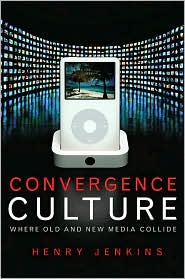Fibreculture Journal 1-15 (2003-2009)
Filed under journal | Tags: · convergence, creative industries, distributed aesthetics, education, innovation, internet, labour, media, media art, media culture, mobility, networks, new media, new media art, remix, research, web 2.0

Fibreculture Journal is a peer reviewed international journal that explores the issues and ideas of concern and interest to both the Fibreculture network and wider social formations. The journal encourages critical and speculative interventions in the debate and discussions concerning information and communication technologies and their policy frameworks, network cultures and their informational logic, new media forms and their deployment, and the possibilities of socio-technical invention and sustainability. Other broad topics of interest include the cultural contexts, philosophy and politics of information and creative industries; national and international strategies for innovation, research and development; education; media and culture, and new media arts.
What Now? : The Imprecise and Disagreeable Aesthetics of Remix
Fibreculture 15, 2009
View (HTML articles)
Web 2.0: Before, During and After the Event
Fibreculture 14, 2009
Edited by Darren Tofts and Christian McCrea
View (HTML articles)
After Convergence: What Connects?
Fibreculture 13, 2008
Edited by Caroline Bassett, Maren Hartmann, Kate O’Riordan
View (HTML articles)
Models, Metamodels and Contemporary Media
Fibreculture 12, 2008
Edited by Gary Genosko and Andrew Murphie
View (HTML articles)
The Futures of Digital Media Arts and Culture
Fibreculture 11, 2008
Edited by Andrew Hutchison and Ingrid Richardson
View (HTML articles)
New Media, Networks and New Pedagogies
Fibreculture 10, 2007
Edited by Adrian Miles
View (HTML articles)
General Issue
Fibreculture 9, 2006
Edited by Andrew Murphie
View (HTML articles)
Gaming Networks
Fibreculture 8, 2006
Edited by Chris Chesher, Alice Crawford and Julian Kücklich
View (HTML articles)
Distributed Aesthetics
Fibreculture 7, 2005
Edited by Lisa Gye, Anna Munster and Ingrid Richardson
View (HTML articles)
Mobility, New Social Intensities, and the Coordinates of Digital Networks
Fibreculture 6, 2005
Edited by Andrew Murphie, Larissa Hjorth, Gillian Fuller and Sandra Buckley
View (HTML articles)
Multitudes, Creative Organisation and the Precarious Condition of New Media Labour
Fibreculture 5, 2005
Edited by Brett Neilson and Ned Rossiter
View (HTML articles)
Contagion and the Diseases of Information
Fibreculture 4, 2005
Edited by Andrew Goffey
View (HTML articles)
General Issue
Fibreculture 3, 2004
Edited by Andrew Murphie
View (HTML articles)
New Media, New Worlds?
Fibreculture 2, 2003
Edited by Andrew Murphie
View (HTML articles)
The Politics of Networks
Fibreculture 1, 2003
Edited by Andrew Murphie
View (HTML articles)
Fibreculture Journal: Internet theory + criticism + research
Publisher: Fibreculture Publications/Open Humanities Press, Australia
ISSN: 1449 – 1443
Janet Staiger, Sabine Hake (eds.): Convergence Media History (2009)
Filed under book | Tags: · convergence, film, mass media, media culture, media history, media studies, new media, television

Convergence Media History explores the ways that digital convergence has radically changed the field of media history. Writing media history is no longer a matter of charting the historical development of an individual medium such as film or television. Instead, now that various media from blockbuster films to everyday computer use intersect regularly via convergence, scholars must find new ways to write media history across multiple media formats. This collection of eighteen new essays by leading media historians and scholars examines the issues today in writing media history and histories. Each essay addresses a single medium—including film, television, advertising, sound recording, new media, and more—and connects that specific medium’s history to larger issues for the field in writing multi-media or convergent histories. Among the volume’s topics are new media technologies and their impact on traditional approaches to media history; alternative accounts of film production and exhibition, with a special emphasis on film across multiple media platforms; the changing relationships between audiences, fans, and consumers within media culture; and the globalization of our media culture.
Publisher Taylor and Francis, 2009
ISBN 0415996619, 9780415996617
212 pages
PDF (updated on 2012-7-15)
Comment (0)Henry Jenkins: Convergence Culture – Where Old and New Media Collide (2006)
Filed under book | Tags: · convergence, fan culture, media franchise, participation, popculture, transmedia storytelling
Convergence Culture maps a new territory: where old and new media intersect, where grassroots and corporate media collide, where the power of the media producer and the power of the consumer interact in unpredictable ways.
Henry Jenkins, one of America’s most respected media analysts, delves beneath the new media hype to uncover the important cultural transformations that are taking place as media converge. He takes us into the secret world of Survivor Spoilers, where avid internet users pool their knowledge to unearth the show’s secrets before they are revealed on the air. He introduces us to young Harry Potter fans who are writing their own Hogwarts tales while executives at Warner Brothers struggle for control of their franchise. He shows us how The Matrix has pushed transmedia storytelling to new levels, creating a fictional world where consumers track down bits of the story across multiple media channels.Jenkins argues that struggles over convergence will redefine the face of American popular culture. Industry leaders see opportunities to direct content across many channels to increase revenue and broaden markets. At the same time, consumers envision a liberated public sphere, free of network controls, in a decentralized media environment. Sometimes corporate and grassroots efforts reinforce each other, creating closer, more rewarding relations between media producers and consumers. Sometimes these two forces are at war.
Jenkins provides a riveting introduction to the world where every story gets told and every brand gets sold across multiple media platforms. He explains the cultural shift that is occurring as consumers fight for control across disparate channels, changing the way we do business, elect our leaders, and educate our children.
Publisher NYU Press, 2006
ISBN 0814742815, 9780814742815
Length 308 pages
publisher
google books
preview


